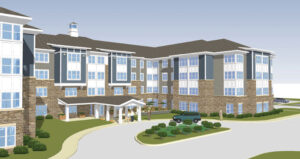Senior living is a growth sector, John Chang, senior vice president of research services at Marcus & Millichap, said Tuesday during a webinar sponsored by the real estate investment services firm .
“We’ve had a lot of curveballs playing at us over the last couple years, with the pandemic, with what’s happening with the interest rates, what’s happening with inflation, the costs of operations. …We have to keep our eye on the destination,” he said, noting that senior living will be needed in the coming years.
Demographics will play a significant role in senior housing development, Chang said, noting that the oldest baby boomers — the generation born between 1946 and 1964 — now are 77 years old. Eighty-two percent of the residents in senior housing are aged more than 75, and a shortage in senior housing is coming, he said.
“There’s lots of interest in the space because it is demographics-driven. With the wave of demand coming, there’s ultimately going to be a supply-demand imbalance, especially with the recent drop-off in development,” said Todd Lindblom, national director of the senior housing division at Marcus & Millichap.
Eric Gillis, senior vice president of investments at San Clemente, CA-based CareTrust REIT, said the real estate investment trust is looking to the future by adding regional operators with experience in senior housing as well as knowledge of the area.
Joe Marinelli, vice president of acquisitions and capital markets at Anthology Senior Living, said he thinks his company has gotten ahead of the demographic curve in the delivery of its development pipeline “to an extent,” with construction of 18 new communities over the past six years.
One of the most impactful things affecting senior housing is what’s happening with jobs, according to Chang.
“As a whole, we’ve recovered all of the jobs lost during the pandemic. …We’re seeing some positive momentum,” he said. Healthcare and, specifically, senior living, however, is still “facing an uphill battle when it comes to repopulating facilities [with workers].”
This reality, in turn, is creating higher payroll costs. Wages have increased approximately 5% to 9% since 2021, Marinelli said.
Jeff Fischer, president of MBK Senior Living, said that his company has dealt with staffing challenges in part by adding recruitment resources, which has resulted in a reduction of agency staffing use.
Inflation will continue to affect senior housing investment, Chang said, but “it looks like we’re moving in the right direction.”
He predicted that the Fed will increase the interest rate by another 150 basis points by year-end to slow inflation.





